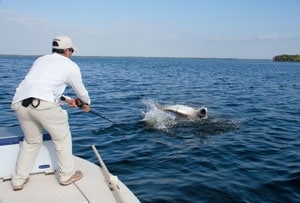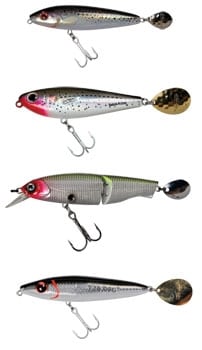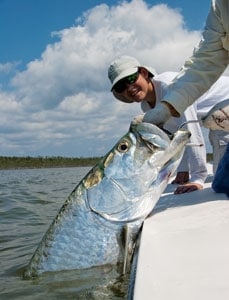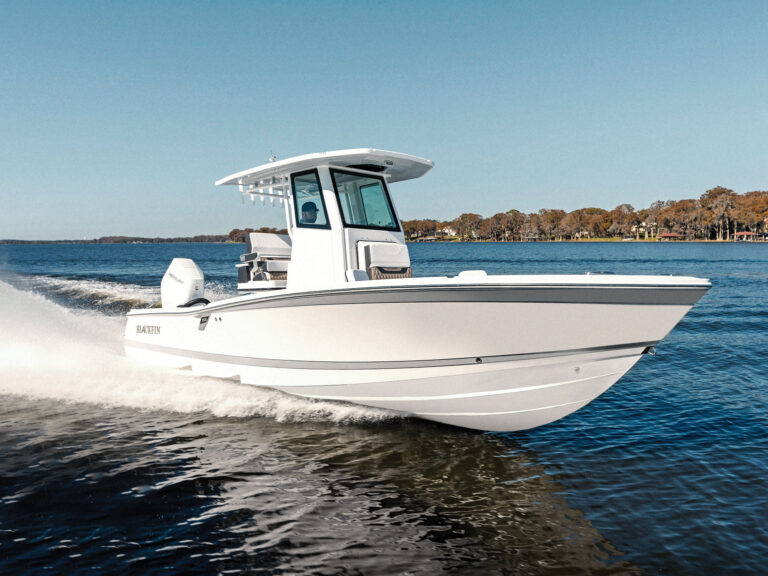
Tarpon may be only a few steps above a pet rock on the intelligence ladder, but they are quite capable of learning. Many decades of fishing semiresident populations – fish that come back annually to the same location at the same time of the year and remain there for months – have taught me that frequent exposure to any lure or even live bait will teach tarpon that those items mean trouble.
First they begin to avoid the particular lure they see most often. Showing them something different works for a while, and then the avoidance begins all over again. These cycles will repeat over a period of years until, eventually, nothing seems to work – at least during daylight hours.
Nowadays, tarpon everywhere get more angler pressure than at any time in their multimillion-year existence, which means they are today much more difficult to fool.
Tactical Diagnosis
A skillful angler can still score with consistency. One reason is that, with each passing year, lures keep getting better and more realistic. Plus there are ways to make these lures even more productive. I am still catching tarpon regularly on both hard- and soft-bodied plugs modified to carry a single treble hook instead of multiples. Best of all, my hookup rate has increased dramatically.
It seems the way to get a solid hookup is not by repeatedly jerking hard to set the hook but by simply applying steady pressure, almost like fishing live bait. Too quick on the trigger definitely means less success, while not being in too much of a hurry to set the hook appears to work best. Of course, this depends on keeping all three points of that single treble as sharp as possible at all times.
In addition to the increased hookup potential, a single treble gives a major safety bonus. Since there are no other free-swinging sets of trebles loose inside the tarpon’s mouth, the risk of getting one of those hooks in some part of your anatomy is vastly diminished – to the point that I almost never use a lip gaff to land a tarpon. A pair of gloves capable of maintaining a good grip on the lower jaw is sufficient and also a lot easier on the tired tarpon. And for those fish hooked in the lip, a dehooker works just fine without your ever needing to put your hands on them.

Even with the conversion, single treble plugs maintain their designed balance and action. And with the added flashy enticement of a spinner blade on the tail, it is virtually impossible to move the plug too slowly, a real advantage in discolored water, since having it out longer obviously gives any nearby tarpon more time to locate it. Plugs that make noise also help, both on the surface and underwater. Contrary to what some anglers have told me, I find that tarpon are indeed attracted to plugs that rattle, gurgle and pop loudly.
Rig Reconstruction
Your choice of tackle and how to rig it makes a difference. For instance, I strongly prefer monofilament line (16- to 20-pound-test for easier casting) over braid because the stretch actually helps to both hook the fish (by maintaining constant pressure) and fight it (by being far less likely to break during jumps and sudden lunges).
I also prefer baitcasting reels over spinning because I feel I have better control of the situation, plus there are none of the line-twist problems inherent to spinning. The best baitcasting reels for this are those that have a full-time levelwind that moves back and forth during casting as well as retrieving, since this causes far less line wear.

Baitcasting reels that are relatively narrow cast noticeably easier than the wide-spool models. Line capacity is no longer an issue here, thanks to the ultrathin gel braids. I simply add 100 yards of 20-pound-test braid to the spool first and then top it off with mono for casting and fighting the fish. It’s always possible to get 150 to 200 yards of mono on top of the gel unless the reel is just too small for this application in the first place.
Good knots and suitable leaders are critical to success if you want to land a really large tarpon quickly with tackle this light. Use a reliable 100 percent knot (e.g., a Bimini twist, with the double line formed by tying) to connect the first stage of the leader. About 5 feet of 40- to 50-pound-test mono as the first stage of the leader has worked for me over the years. Connect 2 feet of heavy fluorocarbon to this as the shock leader; use 60-pound-test if the water is clear and that’s what it takes to get strikes, otherwise 80. You may lose a really large tarpon now and then with 60, but I have yet to see 80 fail.
***
**Homework **
I hate treble hooks with a passion. Multiple trebles snag the gills and other vulnerable parts of the fish and often impede each other during the hook-set. But my efforts to replace them with a single hook just had not been satisfactory on fish with hard mouths. My solution was to remove all trebles except for the one nearest the front of the lure, which I sharpen carefully. I replace the rear hook with a split ring and spinner blade in silver, gold or bright red, about the same width as the cross section of the lure. Remaining hook hangers are left empty. The fluttering spinner increases the apparent action of the plug, especially during slow retrieves. I also get lots of strikes when the plug sits motionless or when it sinks slowly. No doubt the lifelike flashing of the spinner is a major contributor to this.
These simple modifications do not affect lure balance significantly, but I sometimes replace the remaining treble with one that is slightly larger if I want the lure to sink a little faster.
***
Theater of Operations
It remains true that tarpon, which have large eyes and excellent vision, are easiest to fool when light levels are low. That’s why after dark is typically most productive, dawn or dusk are next, and overcast days yield more strikes than bright days. Even though it is a bit more challenging, I still prefer to fish for them during the day, when I can fully enjoy the visual excitement of their incredible aerobatic antics. They also bite artificials more readily if the water is less than bathtub clear. There doesn’t seem to be any such thing as too much turbidity.
Wind is a different story. Tarpon do not like wind. Perhaps that’s at least partly because wind-driven waves tend to suspend larger sand particles in the water, which they find irritating. It never surprises me to see them vanish quickly when a sudden wind starts making waves, even in relatively clean water.









